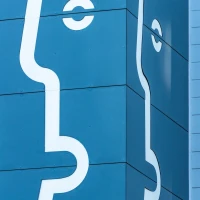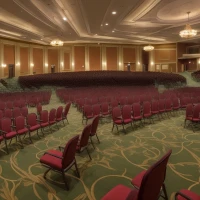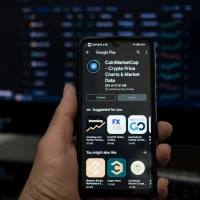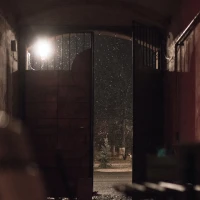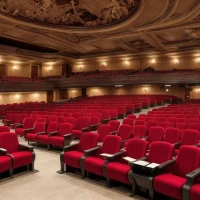The Long Beach Terrace Theater stands as a beacon of architectural marvel and cultural history, artfully blending its storied past with the vibrant tapestry of modern graphing techniques. Renowned for its grandiose design and strategic utility, this majestic facility paves the way for graphing aficionados and history enthusiasts alike; an intersection where historic preservation meets the graphic evolution. Grasp the prowess of this monumental venue as we chart its course through a stunning graphing odyssey.
A Storied Past Meets Modern Graphing Excellence
The Long Beach Terrace Theater heralds a rich legacy that dates back to the mid-20th century. Built as part of the Long Beach Convention and Entertainment Center, this exquisite auditorium has hosted a multiplicity of events, ranging from Broadway shows to grand symphonies. Yet, it’s in the realm of modern graphing where the Terrace Theater illuminates its continued relevance.
The Architectural Graphs of Long Beach Terrace Theater
The theater’s architectural grandeur paints a vivid landscape for graphing scholars and historians. Detailed blueprints and elevation graphs underscore the complexity of its design and the innovative strides taken in its construction. These visual representations serve as crucial educational tools, defining the synergy between historical architecture and modern design principles.
Key Graphical Features of the Terrace Theater:
- Archways and Acoustics: The precise arching and acoustic designs captured in graphing simulations.
- Seating and Sightlines: Graphs that illustrate optimal viewing experiences through meticulously planned seating arrangements.
- Materials and Sustainability: Material utilization laid out in pie charts and bar graphs, emphasizing the theater’s original sustainability efforts.
The Impact of Graphing on Event Planning
Event planning within the confines of the Terrace Theater is an art refined over decades. By employing event layout graphs and time sequence diagrams, organizers and attendees can visualize the spatial dynamics and temporal flow that inherently charm any event held within its walls.
Analytics of Venue Utilization:
- Occupancy Rate Visualization: Pie charts demonstrating usage patterns and the theater’s versatility.
- Acoustic Mapping: Sound distribution and acoustical quality assessed through intricate graphing techniques.
- Event-Type Distribution: Strategies for hosting a diverse event portfolio crystallized through histogram analyses.
The Art of Graphing: A Visualization Phenomenon
Graphing is not merely a method; it’s an art form, capable of transforming abstract data into compelling stories. As we delve into the heart of graphing mastery, we decode how data visualization and chart aesthetics intertwine beautifully within the context of the Long Beach Terrace Theater.
Delving into Data Visualization
Great graphing starts with exceptional data visualization. Let’s explore:
- Infographics: Artistically-crafted, these provide an at-a-glance understanding of the theater’s role within the community.
- Thematic Mapping: Layered data sets that capture the demographic and economic impact of the theater on Long Beach.
- Comparative Analysis: Using line and bar graphs to compare historic preservation costs against modern renovations.
The Evolution of Graphing Technology
Graphing has advanced from rudimentary charts to sophisticated digital platforms. We see exponential growth in:
- Software Innovations: Tools that have catered to detailed architectural renderings and interactive seating charts.
- Interactive Displays: Technological leaps that allow for real-time graphing and immersive data exploration.
- Augmented Reality: Projects that harness AR to overlay historical data onto the modern-day theater structure for an enriched visitor experience.
The Economic Graph of Long Beach Terrace Theater
Analyzing the Terrace Theater’s economics offers an unprecedented window into its fiscal influence and the wider impact on the Long Beach locality. Through financial charts and economic graphs, stakeholders can decrypt patterns of growth and opportunities for future prosperity.
The Fiscal Tale Told in Graphs
Bold decisions in the management of the Terrace Theater have been recorded in sheets and charts, such as:
- Budget Allocation: Line graphs revealing the ebb and flow of financial resources over time.
- Revenue Streams: Charts indicating various sources of income, from ticket sales to private events.
- Economic Impact Studies: Complex graphs depicting the theater’s contribution to local business and tourism sectors.
Dissecting Ticket Sales Through Graphical Analysis
A deep dive into ticket sales data is critical for comprehending consumer behavior:
- Demographic Breakdown: Pie charts unraveling the age, location, and preferences of audiences.
- Sales Trends: Time series graphs showcasing fluctuating patterns in ticket purchase behaviors.
- Price Point Analysis: Histograms and box plots evaluating the effectiveness of pricing strategies.
Charting New Heights with Graphing
As the Long Beach Terrace Theater embraces contemporary graphing methodologies, it charts a course towards a brighter, more informed future. These tools provide actionable insights and visual narratives that entice graphing enthusiasts and historians alike to continually appreciate this storied establishment.
Harnessing Graphing for Restoration and Preservation
Undertaking restoration projects necessitates a meticulous understanding, enabled through:
- Restoration Mapping: Detailed diagrams illustrating areas of focus for preservation efforts.
- Material Usage: Quantitative analysis of authentic versus modern materials, using various chart forms.
- Structural Integrity Analysis: 3D modeling and stress-testing visualizations providing a bedrock for preservation strategies.
The Role of Graphing in Audience Engagement
The art of engagement through graphing is unequivocally transformative at the Terrace Theater:
- Interactive Seating Diagrams: Visual tools enhancing ticket purchasing experiences.
- Visitor Flow Graphs: Streamlined representations that guide effective venue navigation.
- Performance Metrics: Comprehensive dashboards encapsulating audience feedback and satisfaction levels.
In Conclusion: Graphing as a Lifeline for Historical Gems
The Long Beach Terrace Theater’s enduring allure is magnified through the lens of modern graphing. Whether it serves to illustrate the genius of its original design, the intricacy of its event curation, or the snapshots of its economic vitality, graphing stands out as an indispensable element. The Terrace Theater, a historical gem, continues to shine brightly, casting its shadow long into the future, all skilfully plotted on the graphs of today.
In a world where data reigns supreme, the Terrace Theater and its graphing narratives are a testament to the magic conjured when history weds innovation, ensuring that the beauty of the past is not just preserved but also vividly recounted in every dot, line, and curve of the graphs we cherish and study.



